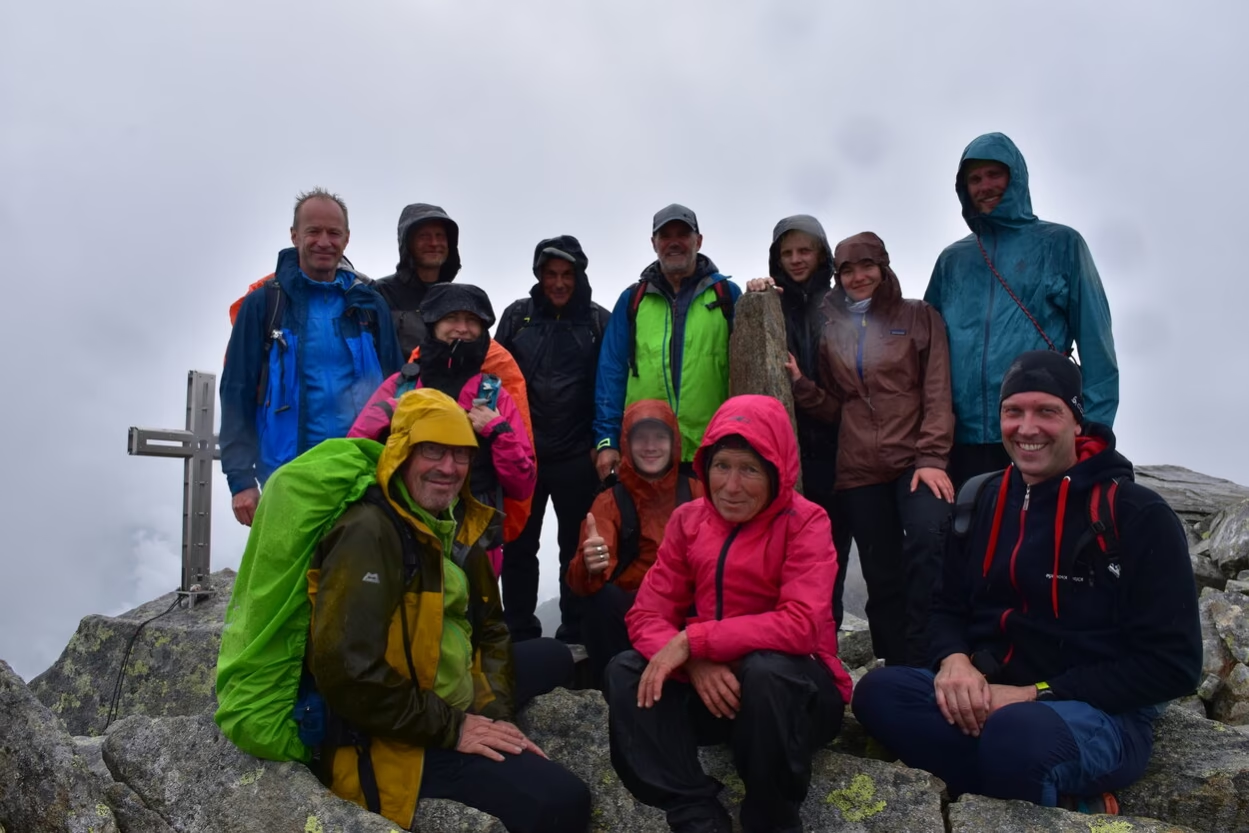The origins of the Chemnitzer Hütte and the work of the Alpine Club
Questions for Sophie Waltschew, Axel Hunger and Max Ullrich from the Chemnitz section of the German Alpine Club.

Why is there a Chemnitz section of the German Alpine Club - on the edge of the Ore Mountains?
After the German and Austrian Alpine Association was founded in the middle of the 19th century, more and more sections were formed throughout Germany under this umbrella organisation. Members of the Erzgebirge-Vogtland and Dresden sections based in Chemnitz wanted their own section. Thus, with effect from
1 January 1882, the Chemnitz section was founded with Prof. Theodor Kellerbauer as chairman of the board. Like the other sections, Chemnitz wanted to play a major role in the development of the Alpine region. New tours were opened up, paths were laid out and the construction of huts was financed.
The Chemnitz section organised the construction of the hut on the Nevesjoch in South Tyrol, the original shelter had been given away by the locals. It was inaugurated on 29 July 1895. With its own hut, the section had a safe place to stay and was equipped for longer tours in the Alps. This was accompanied by the construction of paths, and many routes and tours that we still take today can be traced back to this time. These include the Kellerbauerweg in South Tyrol, which is named after the trailblazer and chairman of the Chemnitz section.
Axel: And not just in the Alps, many climbing routes and hiking trails in the Ore Mountains also date back to this time. The development of the Ore Mountains was "practice" for the big mountains. The typical Saxon climbing culture with the development of routes only from below with a few rings and free climbing was mainly developed in Saxon Switzerland. However, climbing in the Ore Mountains with the Greifensteine, Teufelsstein and Schwarzwassertal was also developed in the Saxon style. Climbing was also practised in quarries such as the Zeisigwald. It was primarily sporting activity that drove the Chemnitz section forward. Initially, alpinism was to be found among the middle classes. They had the time and the money to engage in physical activity. And during industrialisation, people longed for nature and freedom.
The Chemnitz section has existed again since 1990. What are the contents today?
Axel: We currently have almost 3,400 members - from Chemnitz and the Ore Mountains - in the two sections of climbing and hiking. Without our own hut, we participate in the operation of the Bielatalhütte of the Saxon Mountaineering Association. In climbing, we focus on working with young people and can look back on some sporting successes, for example Lucia Dörffel took part in the Olympic Games in Paris last year. When it comes to hiking, you tend to meet older members, but our aim is to inspire younger people here too. We also train tour guides, from hut hiking to high-altitude tours and climbing: youth leaders, hiking guides and trainers for all types of mountain sports activities (e.g. sport climbing, mountaineering, ski mountaineering, alpine climbing, via ferrata, etc.).
How can I become a member of the Alpine Club?
Max: The easiest way is online via our homepage or you can drop by our office. But basically anyone can become a member, there are no special sporting requirements. Members have discounts on accommodation in the huts. Or you can take part in training sessions in our groups, use our library and are covered by rescue and rescue cost insurance while travelling.
Our group "Freundeskreis Alte Chemnitzer Hütte" offers the opportunity to subscribe to the newsletter without obligation and without becoming a member. In this way, you can find out interesting facts about the Chemnitzer Hütte from many areas, share your own experiences or take part in personal meetings. We also publish our content on social media to spread the word and publicise the association.
How do you try to attract younger people?
Axel: When it comes to climbing, many are active in the youth groups. You can try it out in taster sessions, and we also try to attract younger people through trips.
Sophie: We do meet a lot of younger mountaineers in the mountains, but unfortunately there is often little interest in the club's work and little willingness to take on responsibility for a hiking group these days.
Max: And Sophie and I are focussing on our circle of friends at the Chemnitzer Hütte. We want to publicise it, preserve its history and maintain contact with the Grubers, the landlords of the hut. The older generation has been doing this for many years. We want to use this year's hut tour over the main Alpine ridge to familiarise the youth groups with each other - and to invite the South Tyroleans to the Erzgebirge or Saxon Switzerland.
What is the exchange with the hut owners like and what are you planning for the 130th anniversary?
Axel: The first visit after reunification was in the summer of 1990 and the relationship with the old Chemnitz hut is very close. Some of our club members are in regular contact with the Gruber family and are friends with the landlords. They visit each other regularly, and the Chemnitz section usually travels to South Tyrol.

